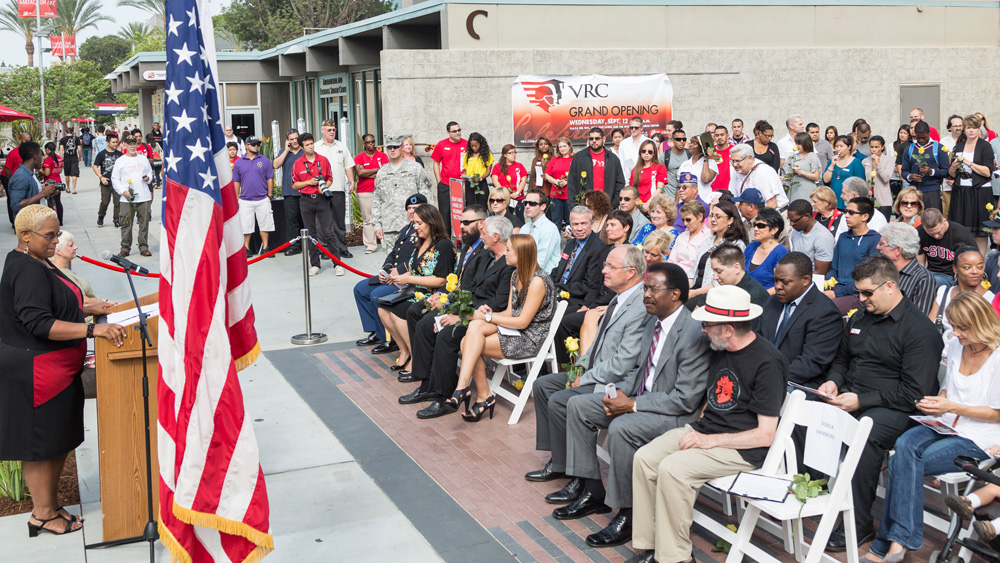
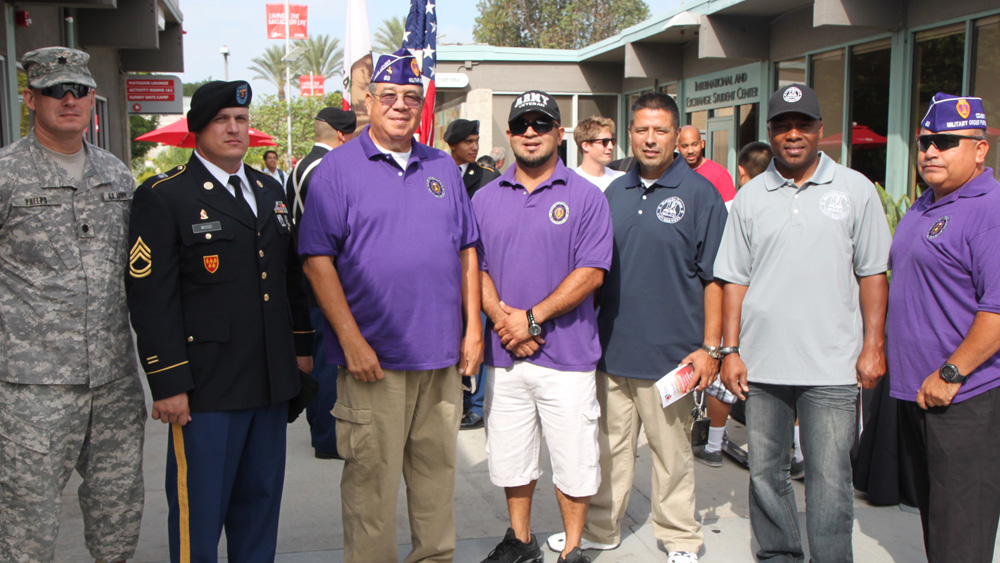
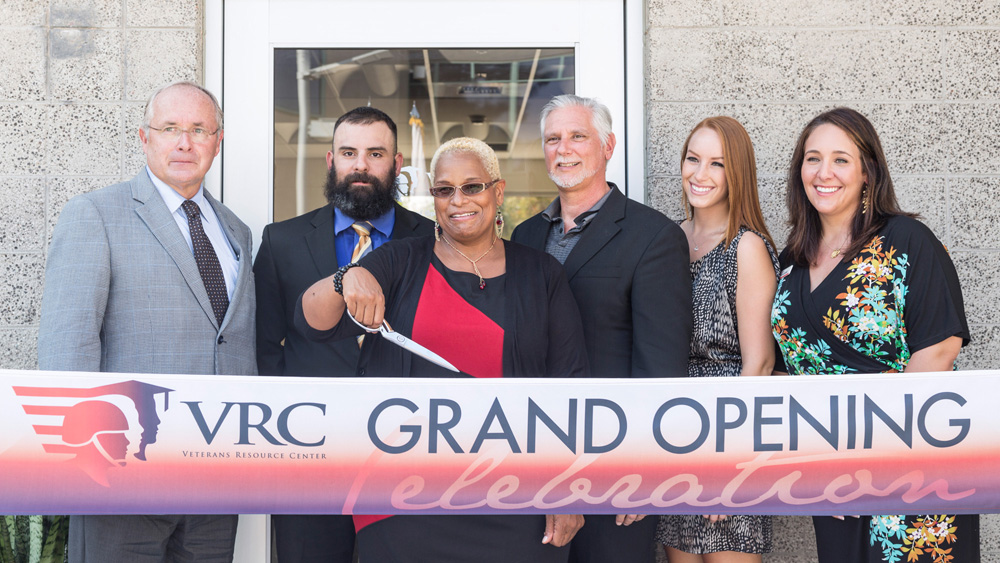
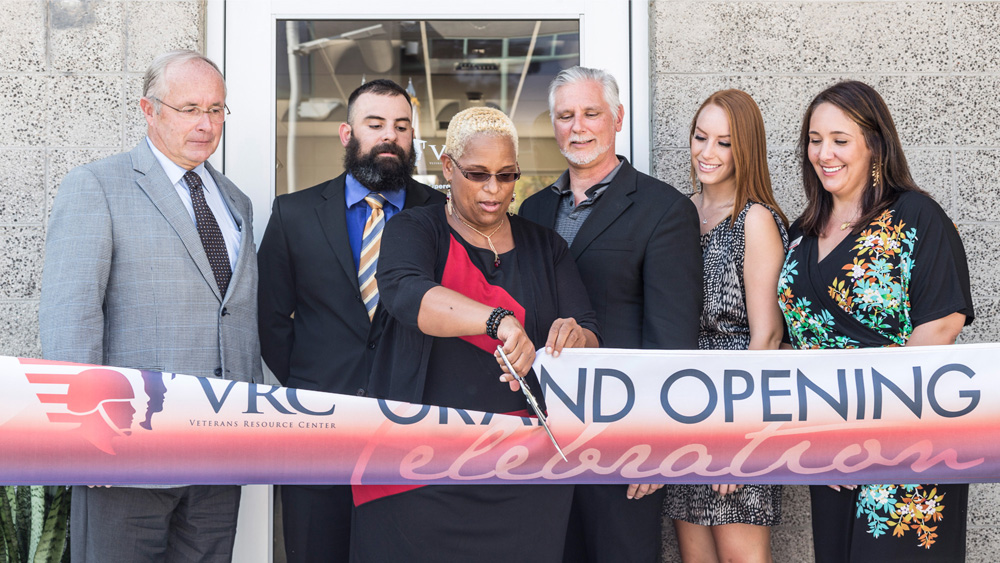
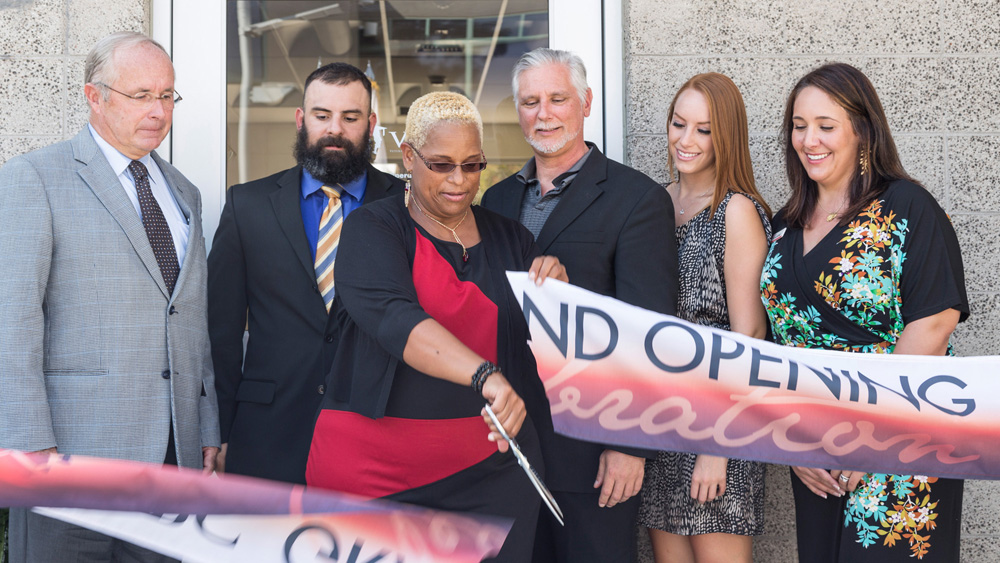
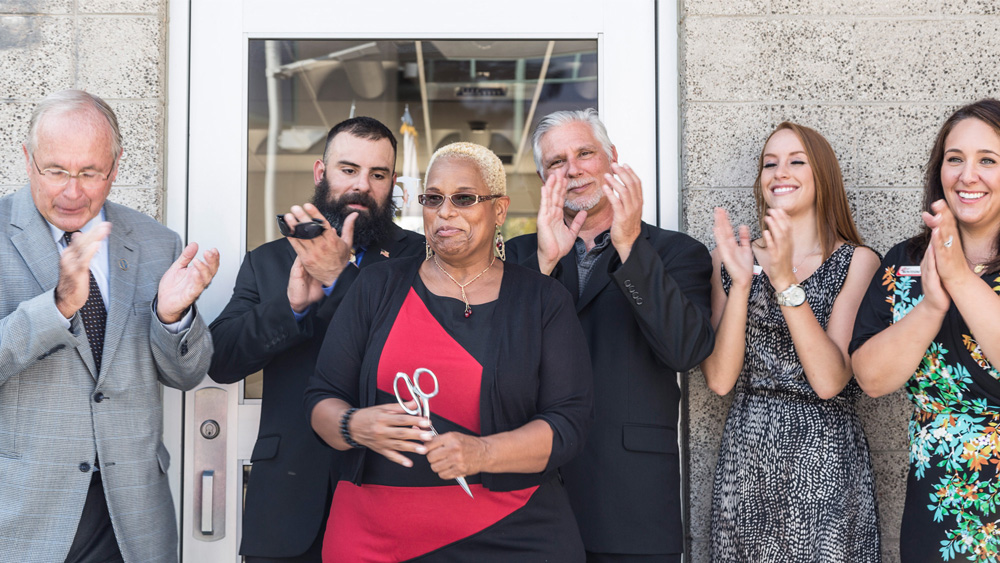
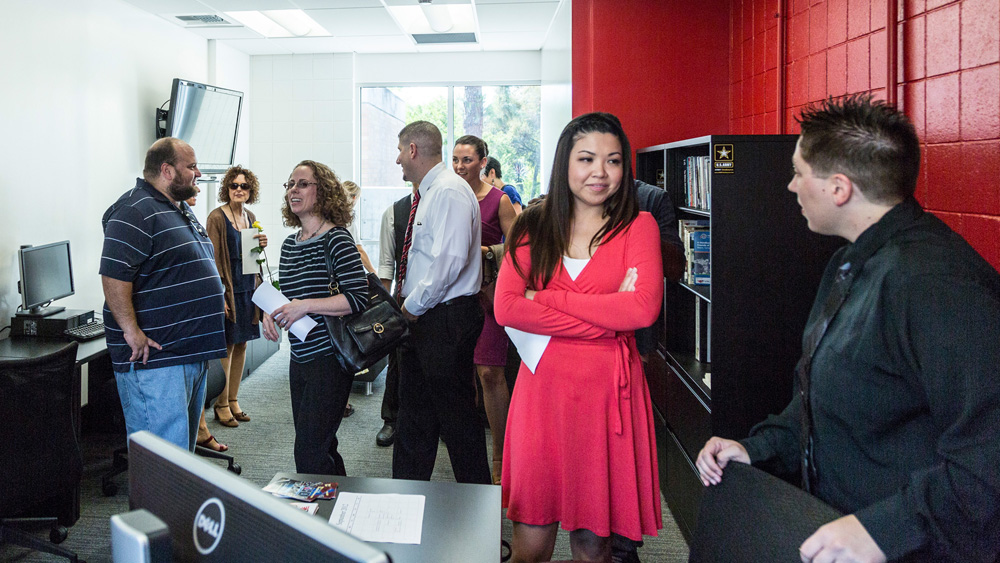
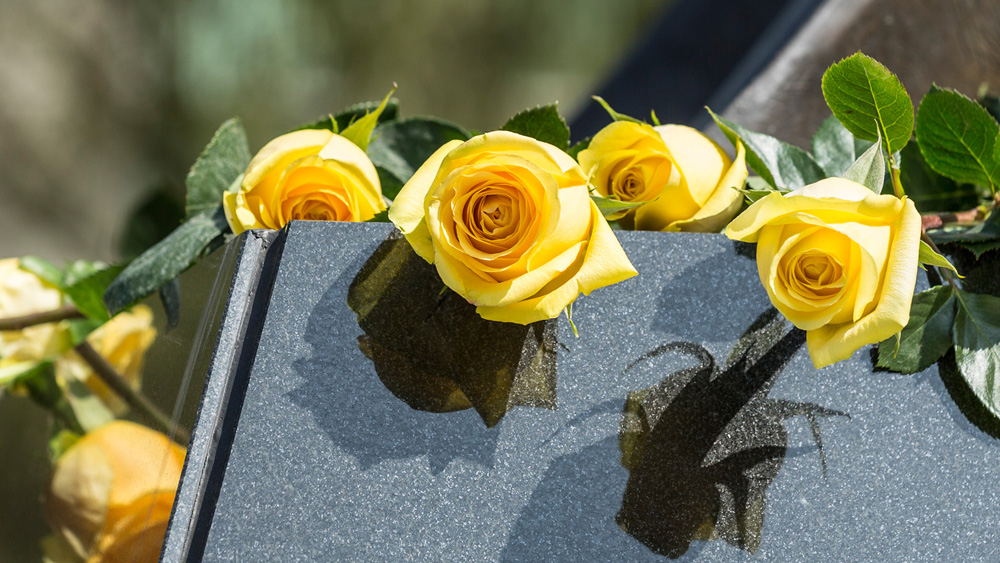
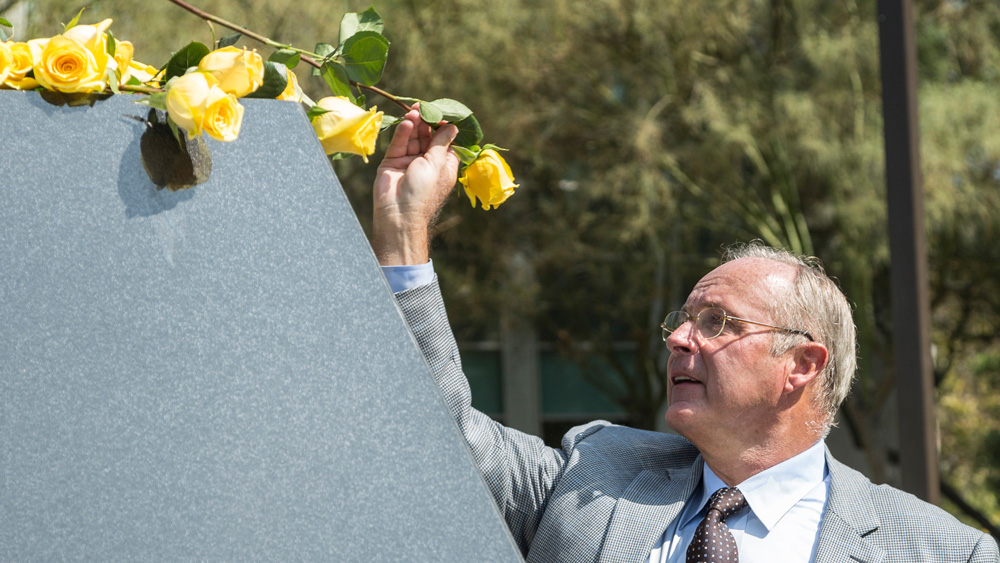
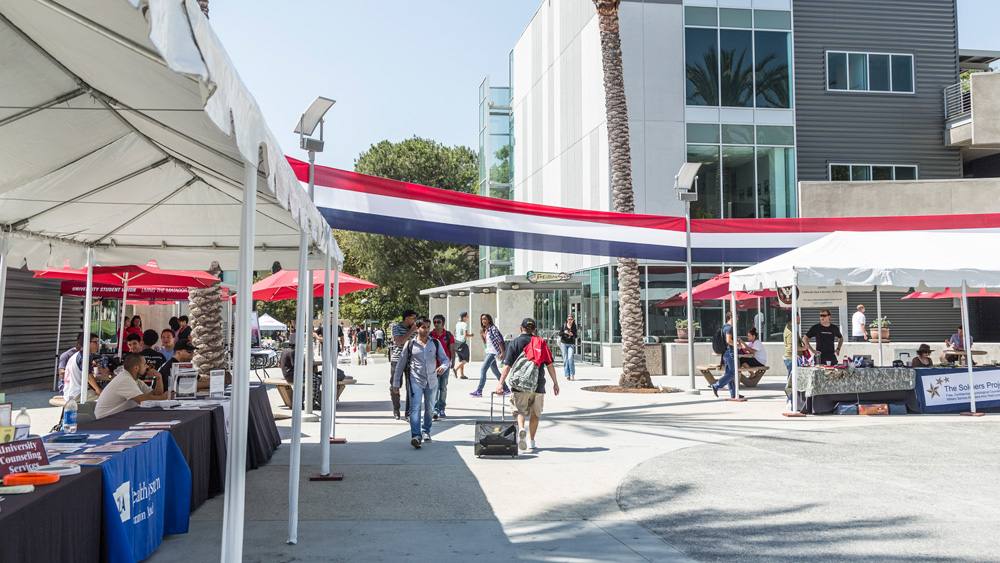
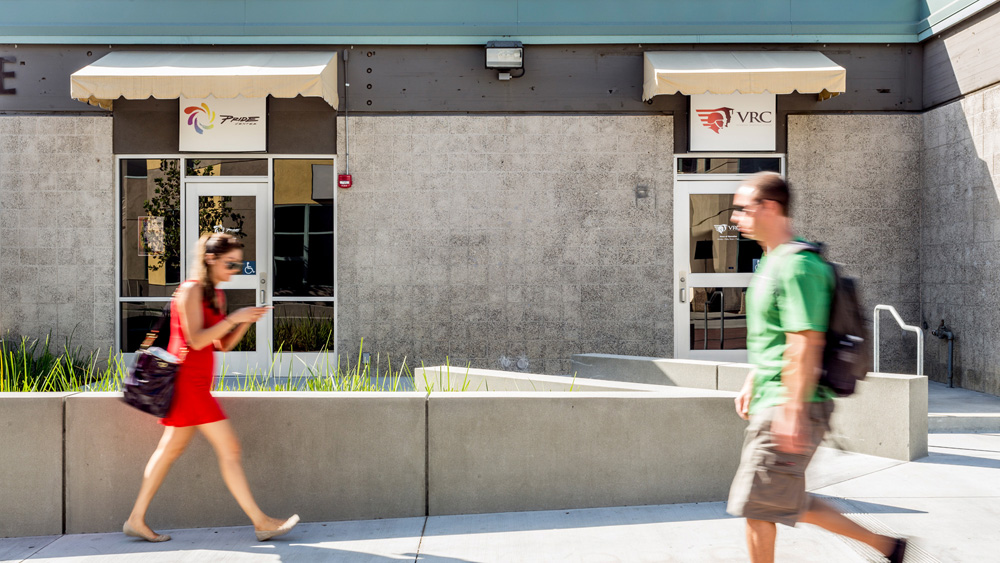
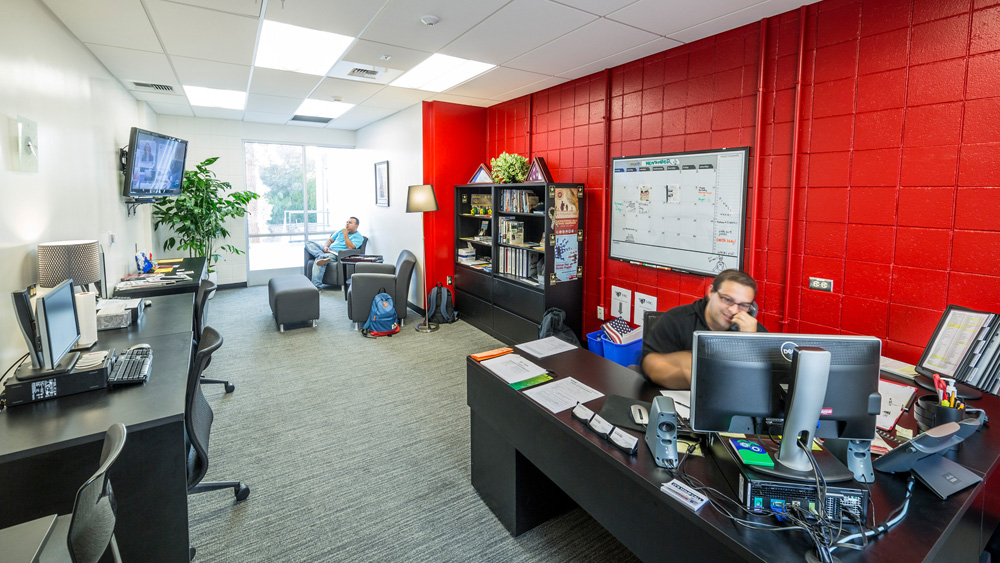
The University Student Union (USU) proudly kicked off the year by honoring the men and women of the U.S. armed services who selected California State University, Northridge (CSUN) as the place to pursue a different kind of mission — a college degree. There, a gathering place for veteran students, reservists and dependents was created to assist veterans in the transition from service member to collegian.
Under the watchful eye of the color guard, the Veterans Resource Center (VRC) opened in August as a central hub for campus veterans to congregate and learn more about campus resources that were created to support their distinct needs.
“The VRC has been significant to the veteran population by providing them with a space to transition from solider to student,” said Laura Hurtado, a peer mentor for the VRC. “At the VRC, they meet others like them and through interactions with staff and supporters, I believe they feel a bigger sense of community and school spirit.”
During its first year of operation under the direction of Monteigne Long, coordinator of the center, the VRC averaged 22 students per day during the fall semester and 25 students per day in the spring. Supported by six peer mentors, students were drawn to the center to study, socialize, and access resources and services.
“Those that have visited the center enjoy the space and the amenities we provide them such as computer stations, TV and a lounge area to relax between classes,” said Hurtado, a specialist (E-4) with the Army National Guard and a Public Health Promotion senior.
For Veteran‘s Day, the center presented “Beyond the Label” — a program that featured student veterans, speaking about their academic and non-military lives. The event was designed to encourage the campus community to look beyond the “veteran” label and learn more about a growing segment of the CSUN population.
The Peer Mentor Program expanded from a traditional mentoring program to one that included “mentoring on the run” — a form of mentoring ideally suited for a large student population where moments of mentoring takes place during daily interactions with students. With peer mentors holding office hours in the VRC, innumerable “mentoring on the run” encounters took place between mentors and students seeking assistance.
The VRC facilitated more than 15 Veteran Awareness Educational Presentations and Trainings, reaching 600+ people. These trainings raised awareness throughout campus about student veteran issues — a key component of creating a veteran-friendly campus. Additionally, campus-wide training for faculty and staff was sponsored by CSUN Human Resources and presented by the VRC coordinator and the director of University Counseling Services (UCS).
Key collaborations continued to help spread the message. With support from the Office of Student Outreach and Recruitment, VRC members attended college fairs at local community colleges, partnered with University Counseling Services for a “Do You Love a Veteran?” workshop about supporting veteran friends and family members, and supporting the MRE (Meet, Relax, and Eat) Discussion Group — a collaboration with UCS.
Game Nights were held once a month, attracting about 20 students per night; a Veterans Graduation Reception was held for 17 graduating student veterans and included the presentation of the Outstanding Graduating Veteran Award and the Peer Mentoring Award; and film screenings were held for The Invisible War — a collaboration with the Sepulveda Vet Center and Valley Trauma Center which featured appearances by the film’s producer and director; and High Ground — a conversation with CSUN Distinguished Alumnus and Producer Don Hahn.
In yet another partnership with the Student Veteran Organization and Unified We Serve, the VRC supported Operation Gratitude — a campus-wide collection drive for deployed service members. Proceeds went to Operation Gratitude, a local, non-profit organization that sends more than 100,000 care packages annually to Soldiers, Sailors, Airmen, and Marines deployed to hostile regions.
“The center for me has expanded my knowledge of what it means to be a veteran student,” Hurtado said. “It has provided me with my opportunities to not only mentor, but learn from all those who visit the VRC.”











